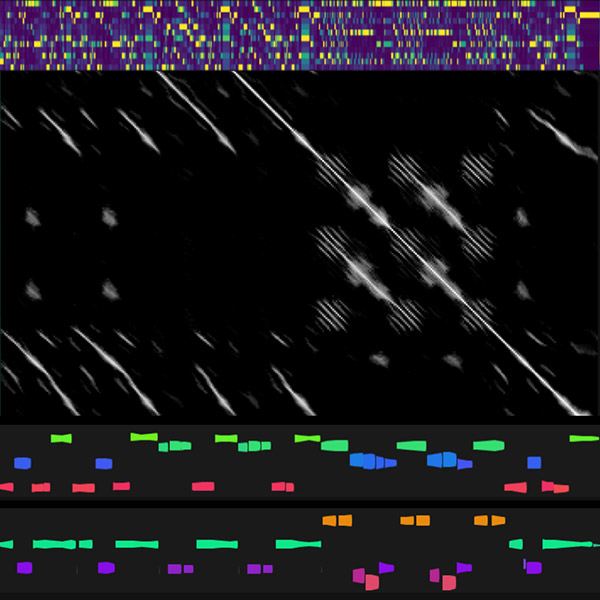back to list

Project: Visualizing music structure using Spotify data
Description

For musicians and music analysis, discovering, and explaining structural patterns is still done mostly by hand. And due to the limitation of having to listen to the music multiple times for its entire duration it is also very time consuming. For some songs, musical notation exists, but even this universal visualization lacks in some areas. Apart from modern music almost never being written down formally, a clear, broad overview of repetition and change of musical aspects such as harmony, rhythm, timbre and dynamics are not easily visible in this representation.
In contrast to how intuitively humans can perceive these concepts, for machines this forms a large challenge. Due to the sheer diversity and subjectiveness of music, combined with a lack of ground truth data, it is also not a great candidate for machine learning.
This research aims to create a method of visualizing these structural aspects in a clear way, using only an abstracted audio representation provided by Spotify's Analysis API. With less and less people actually owning audio files, it is crucial that the streaming services keep the possibility of analysing music on an audio level alive. Therefore this research also serves as an evaluation of the usability of the abstracted data that Spotify provides.
The tool is mainly aimed at music performers. When learning a song, seeing the global structure, and finding patterns and anomalies within it is essential to understanding and memorizing the music. In ensemble settings it is especially important to have an objective structural image of the song shared by everyone. Throughout the learning process, the tool can also be used for further exploration and linked playback.
This representation is also a great help to music analysts that, when first encountering a song, can skip the mundane broad structure annotation and immediately get a clear picture of the music's landscape.
Finally, with the tool being easily and quickly accessible, it also allows lay people to learn about song structure and other musical concepts, gaining insights into the workings of a song, and inviting them to listen to music a little deeper.
Details
- Student
-
JSJob Savelsberg
- Supervisor
-
 Jack van Wijk
Jack van Wijk
- Link
- Thesis